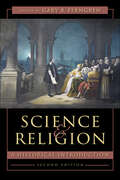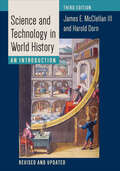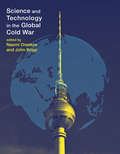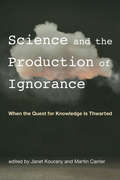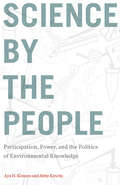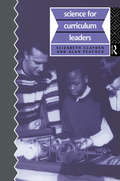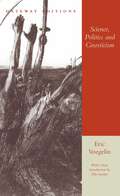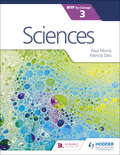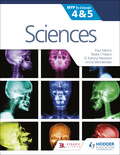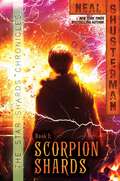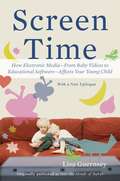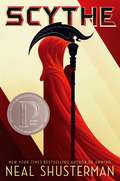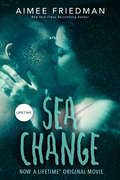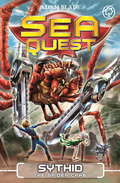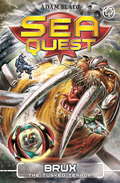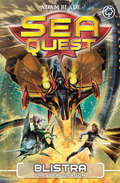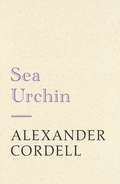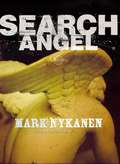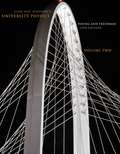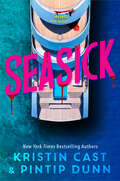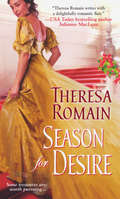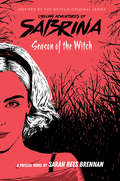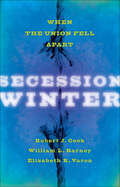- Table View
- List View
Science and Religion: A Historical Introduction
by Gary B. FerngrenAn essential examination of the historical relationship between science and religion.Since its publication in 2002, Science and Religion has proven to be a widely admired survey of the complex relationship of Western religious traditions to science from the beginning of the Christian era to the late twentieth century. In the second edition, eleven new essays expand the scope and enhance the analysis of this enduringly popular book.Tracing the rise of science from its birth in the medieval West through the scientific revolution, the contributors here assess historical changes in scientific understanding brought about by transformations in physics, anthropology, and the neurosciences and major shifts marked by the discoveries of Copernicus, Galileo, Isaac Newton, Charles Darwin, and others. In seeking to appreciate the intersection of scientific discovery and the responses of religious groups, contributors also explore the theological implications of contemporary science and evaluate approaches such as the Bible in science and the modern synthesis in evolution, which are at the center of debates in the historiography, understanding, and application of science.The second edition provides chapters that have been revised to reflect current scholarship along with new chapters that bring fresh perspectives on a diverse range of topics, including new scientific approaches and disciplines and non-Christian traditions such as Judaism, Islam, Asiatic religions, and atheism. This indispensible classroom guide is now more useful than ever before.Contributors: Richard J. Blackwell, Peter J. Bowler, John Hedley Brooke, Glen M. Cooper, Edward B. Davis, Alnoor Dhanani, Diarmid A. Finnegan, Noah Efron, Owen Gingerich, Edward Grant, Steven J. Harris, Matthew S. Hedstrom, John Henry, Peter M. Hess, Edward J. Larsen, Timothy Larson, David C. Lindberg, David N. Livingstone, Craig Martin, Craig Sean McConnell, James Moore, Joshua M. Moritz, Mark A. Noll, Ronald L. Numbers, Richard Olson, Christopher M. Rios, Nicolaas A. Rupke, Michael H. Shank, Stephen David Snobelen, John Stenhouse, Peter J. Susalla, Mariusz Tabaczek, Alan C. Weissenbacher, Stephen P. Weldon, and Tomoko Yoshida
Science and Technology in World History: An Introduction
by Harold Dorn James E. McClellan IIIArguably the best general history of science and technology ever published.Tracing the relationship between science and technology from the dawn of civilization to the early twenty-first century, James E. McClellan III and Harold Dorn’s bestselling book argues that technology as "applied science" emerged relatively recently, as industry and governments began funding scientific research that would lead directly to new or improved technologies.McClellan and Dorn identify two great scientific traditions: the useful sciences, which societies patronized from time immemorial, and the exploration of questions about nature itself, which the ancient Greeks originated. The authors examine scientific traditions that took root in China, India, and Central and South America, as well as in a series of Near Eastern empires in late antiquity and the Middle Ages. From this comparative perspective, McClellan and Dorn survey the rise of the West, the Scientific Revolution of the seventeenth century, the Industrial Revolution, and the modern marriage of science and technology. They trace the development of world science and technology today while raising provocative questions about the sustainability of industrial civilization.This new edition of Science and Technology in World History offers an enlarged thematic introduction and significantly extends its treatment of industrial civilization and the technological supersystem built on the modern electrical grid. The Internet and social media receive increased attention. Facts and figures have been thoroughly updated and the work includes a comprehensive Guide to Resources, incorporating the major published literature along with a vetted list of websites and Internet resources for students and lay readers.
Science and Technology in the Global Cold War (Transformations: Studies in the History of Science and Technology)
by John Krige Naomi OreskesInvestigations of how the global Cold War shaped national scientific and technological practices in fields from biomedicine to rocket science.The Cold War period saw a dramatic expansion of state-funded science and technology research. Government and military patronage shaped Cold War technoscientific practices, imposing methods that were project oriented, team based, and subject to national-security restrictions. These changes affected not just the arms race and the space race but also research in agriculture, biomedicine, computer science, ecology, meteorology, and other fields. This volume examines science and technology in the context of the Cold War, considering whether the new institutions and institutional arrangements that emerged globally constrained technoscientific inquiry or offered greater opportunities for it.The contributors find that whatever the particular science, and whatever the political system in which that science was operating, the knowledge that was produced bore some relation to the goals of the nation-state. These goals varied from nation to nation; weapons research was emphasized in the United States and the Soviet Union, for example, but in France and China scientific independence and self-reliance dominated. The contributors also consider to what extent the changes to science and technology practices in this era were produced by the specific politics, anxieties, and aspirations of the Cold War.ContributorsElena Aronova, Erik M. Conway, Angela N. H. Creager, David Kaiser, John Krige, Naomi Oreskes, George Reisch, Sigrid Schmalzer, Sonja D. Schmid, Matthew Shindell, Asif A. Siddiqi, Zuoyue Wang, Benjamin Wilson
Science and the Production of Ignorance: When the Quest for Knowledge Is Thwarted (The\mit Press Ser.)
by Martin Carrier Janet KouranyAn introduction to the new area of ignorance studies that examines how science produces ignorance—both actively and passively, intentionally and unintentionally.We may think of science as our foremost producer of knowledge, but for the past decade, science has also been studied as an important source of ignorance. The historian of science Robert Proctor has coined the term agnotology to refer to the study of ignorance, and much of the ignorance studied in this new area is produced by science. Whether an active or passive construct, intended or unintended, this ignorance is, in Proctor's words, “made, maintained, and manipulated” by science. This volume examines forms of scientific ignorance and their consequences.A dialogue between Proctor and Peter Galison offers historical context, presenting the concerns and motivations of pioneers in the field. Essays by leading historians and philosophers of science examine the active construction of ignorance by biased design and interpretation of experiments and empirical studies, as seen in the “false advertising” by climate change deniers; the “virtuous” construction of ignorance—for example, by curtailing research on race- and gender-related cognitive differences; and ignorance as the unintended by-product of choices made in the research process, when rules, incentives, and methods encourage an emphasis on the beneficial and commercial effects of industrial chemicals, and when certain concepts and even certain groups' interests are inaccessible in a given conceptual framework.ContributorsMartin Carrier, Carl F. Cranor, Peter Galison, Paul Hoyningen-Huene, Philip Kitcher, Janet Kourany, Hugh Lacey, Robert Proctor, Londa Schiebinger, Miriam Solomon, Torsten Wilholt
Science by the People: Participation, Power, and the Politics of Environmental Knowledge (Nature, Society, and Culture)
by Aya H. Kimura Abby KinchyCitizen science—research involving nonprofessionals in the research process—has attracted both strong enthusiasts and detractors. Many environmental professionals, activists, and scholars consider citizen science part of their toolkit for addressing environmental challenges. Critics, however, contend that it represents a corporate takeover of scientific priorities. In this timely book, two sociologists move beyond this binary debate by analyzing the tensions and dilemmas that citizen science projects commonly face. Key lessons are drawn from case studies where citizen scientists have investigated the impact of shale oil and gas, nuclear power, and genetically engineered crops. These studies show that diverse citizen science projects face shared dilemmas relating to austerity pressures, presumed boundaries between science and activism, and difficulties moving between scales of environmental problems. By unpacking the politics of citizen science, this book aims to help people negotiate a complex political landscape and choose paths moving toward social change and environmental sustainability.
Science for Curriculum Leaders (Primary Inset Series)
by Alan Peacock Elizabeth ClaydenThe ten modules here cover both areas of particular concern in the teaching of science - organising the classroom for investigations, reviewing science coverage on a whole school basis - and the ways in which issues of more general concern in the primary curriculum (the multicultural dimension, planning for individual progression, assessment etc.), affect the teaching of science.
Science, Politics and Gnosticism: Two Essays (The Collected Works Of Eric Voegelin Series #5)
by Eric VoegelinThis concise classic is the most accessible work in the canon of one of the 20th century'sgreatest political scientists. Eric Voegelin here contends that certain modern movements, including Positivism, Hegelianism, Marxism, and the "God is Dead" movement, are variants of the Gnostic tradition of antiquity. Highly provocative, this book is essential reading for students of modern politics, philosophy, and religion. <P><P>Hailed by the American Political Science Review as "one of the most distinguished interpreters to Americans of the non-liberal streams of European thought," Professor Voegelin was director of the Institute for Political Science at the University of Munich as well as professor of political science and lecturer at numerous universities in the United States and Europe. <P><P>With a new introduction by Ellis Sandoz, professor of political science at Lousiana State University and director of the Eric Voegelin Institute for American Renasissance Studies.
Sciences for the IB MYP 3
by Paul Morris Patricia DeoA concept-driven and assessment-focused approach to Sciences teaching and learning.- Approaches each chapter with statements of inquiry framed by key and related concepts, set in a global context- Supports every aspect of assessment using tasks designed by an experienced MYP educator- Differentiates and extends learning with research projects and interdisciplinary opportunities- Applies global contexts in meaningful ways to offer an MYP Sciences programme with an internationally-minded perspective
Sciences for the IB MYP 4&5: MYP by Concept
by Paul Morris Radia Chibani Kahina Meziane Anna MichaelidesDevelop your skills to become an inquiring learner; ensure you navigate the MYP framework with confidence using a concept-driven and assessment-focused approach to Sciences presented in global contexts.· Develop conceptual understanding with key MYP concepts and related concepts at the heart of each chapter. · Learn by asking questions for a statement of inquiry in each chapter. · Prepare for every aspect of assessment using support and tasks designed by experienced educators.· Understand how to extend your learning through research projects and interdisciplinary opportunities.· Think internationally with chapters and concepts set in global contexts.
Scorpion Shards (The Star Shards Chronicles #1)
by Neal ShustermanSix teens struggle to discover the source of their strange and horrific abilities in this first book of The Star Shards Chronicles.Dillon has the terrifying power to create massive amounts of destruction with the slightest tweak of his will. Deanna is so consumed by fear, it has become like a black hole, drawing to her the very things that terrify her. Then, when the glare of a supernova sixteen light-years away illuminates the night sky, they have a vision: There are six of them out there, all teenagers, and all suffering from supernatural afflictions that disfigure their bodies and souls. Only by finding one another will the six ever be strong enough to defeat these mysterious forces that, bit by bit, are devouring their souls from the inside out. Acclaimed author Neal Shusterman “combines personal quest, horror, and science fiction into an absorbing exploration of good and evil, guilt, forgiveness and personal responsibility” (VOYA) in this thrilling start to a riveting trilogy. Originally published by Tor Fantasy in 1995.
Screen Time: How Electronic MediaFrom Baby Videos to Educational SoftwareAffects Your Young Child
by Lisa GuernseyAs a mother, Lisa Guernsey wondered about the influence of television on her two young daughters. As a reporter, she resolved to find out. What she first encountered was tired advice, sensationalized research claims, and a rather draconian mandate from the American Academy of Pediatrics: no TV at all before the age of two. But like many parents, she wanted straight answers and realistic advice, so she kept digging: she visited infant-perception labs and child development centers around the country. She interviewed scores of parents, psychologists, cognitive scientists, and media researchers, as well as programming executives at Noggin, Disney, Nickelodeon, Sesame Workshop, and PBS. Much of what she found flies in the face of conventional wisdom and led her to conclude that new parents will be best served by focusing on "the three C's": content, context, and the individual child. Advocating a new approach to television and DVDs, Guernsey focuses on infants to five-year-olds and goes beyond the headlines to explore what exactly is "educational" about educational media. She examines how play and language development are affected by background and foreground television and how to choose videos that are age-appropriate. She explains how to avoid the hype of "brain stimulation" and focus instead on social relationships and the building blocks of language and literacy. Along the way, Guernsey highlights independent research on shows ranging from Dora the Explorer to Dragon Tales, and distills some surprising new findings in the field of child development. Into the Minds of Babes is a fascinating book that points out how little credible research exists to support the AAP's dire recommendation. Parents, teachers, and psychologists will be relieved to learn positive approaches to using videos with young children and will be empowered to make their own informed choices.
Screenshot (Point Ser.)
by Donna CoonerWe are launching our exciting new Point Paperbacks imprint with this novel from acclaimed author Donna Cooner, about the way we live our lives -- and lies -- on social media.Skye's social media game is always on point. Until her best friend, Asha, films an embarrassing video of Skye at a sleepover and posts it online. But Asha quickly deletes the post, so everything's okay. Right?Then Skye gets an anonymous message. Someone has texted her a screenshot from the video. This person threatens to share the shocking photo online . . . unless Skye does whatever they say. Skye's perfect image -- and privacy -- are suddenly in jeopardy. What will Skye do to keep the screenshot under wraps? And who is trying to ruin her life?
Scythe (Arc of a Scythe #1)
by Neal ShustermanA Time Best YA Book of All Time (2021) Two teens must learn the &“art of killing&” in this Printz Honor–winning book, the first in a chilling new series from Neal Shusterman, author of the New York Times bestselling Unwind dystology.A world with no hunger, no disease, no war, no misery: humanity has conquered all those things, and has even conquered death. Now Scythes are the only ones who can end life—and they are commanded to do so, in order to keep the size of the population under control. Citra and Rowan are chosen to apprentice to a scythe—a role that neither wants. These teens must master the &“art&” of taking life, knowing that the consequence of failure could mean losing their own. Scythe is the first novel of a thrilling new series by National Book Award–winning author Neal Shusterman in which Citra and Rowan learn that a perfect world comes only with a heavy price.
Sea Change
by Aimee FriedmanBestselling author Aimee Friedman is back, with her signature combination of warmth and humor. And with this book, she adds a touch of fantasy. . .Lifetime Original Movie!New York Times bestselling author Aimee Friedman is back, with her signature combination of warmth and humor. And with this book, she adds a touch of fantasy. . .Sixteen-year-old Miranda Merchant is great at science. . .and not so great with boys. After major drama with her boyfriend and (now ex) best friend, she's happy to spend the summer on small, mysterious Selkie Island, helping her mother sort out her late grandmother's estate.There, Miranda finds new friends and an island with a mysterious, mystical history, presenting her with facts her logical, scientific mind can't make sense of. She also meets Leo, who challenges everything she thought she knew about boys, friendship. . .and reality.
Sea Quest: Book 17
by Adam BladeA precious Merryn treasure map has been stolen, and it becomes clear that the dreaded pirate Red Eye is involved. But who is Red Eye, and what will happen if he finds all four treasures? Max and Lia must stop him!The first thrilling adventure in Sea Quest Series 5: The Chaos Quadrant. Look out for Brux the Tusked Terror, Venor the Sea Scorpion and Monoth the Spiked Destroyer!
Sea Quest: Book 18
by Adam BladeMax and Lia are on the trail of a fiendish pirate, Red Eye, who plans to steal four ancient Merryn treasures, when they meet a monstrous walrus Robobeast. Can they defeat Brux and claim the treasure before Red Eye?The second thrilling adventure in Sea Quest Series 5: The Chaos Quadrant. Look out for Sythid the Spider Crab, Venor the Sea Scorpion and Monoth the Spiked Destroyer!
Sea Quest: Book 28
by Adam BladeMax won't stop until the crazed computer is defeated, and he gets the final element to save Aquora. But Iris still has her most powerful Robobeast . . . Blistra the Sea Dragon.The last thrilling book in Sea Quest Series 7: The Lost Starship. Don't miss the rest of the series:Veloth the Vampire Squid, Glendor the Stealthy Shadow and Mirroc the Goblin Shark!
Sea Urchin
by Alexander CordellThe Isle of Man is a Fairy place. If you know where to look, you may still find the little people, as they are called. On the Island lived a Chinese boy, Hu, with his father and his dog Kau Kau. One day Hu's father said that he was going to Liverpool to bring home a new wife, and a new mother for Hu. But Hu did not want a new mother. So he too his father's dinghy and sailed away with Kau Kau to the tiny island called the Calf of Man. Nobody knew where he had gone. But the birds and animals came to his aid. With Basking Shark speeding though the waves, the prow rope of the dinghy in his jaws, and with Don Dolphin racing alongside, while the birds flew in clouds overhead, Hu was taken to the Little People. Surely they would help him... SEA URCHIN is a wonderful fable for younger readers from the bestselling author of the Mortymer Trilogy.
Search Angel: A Novel
by Mark NykanenA riveting suspense thriller about the reuniting of birth mothers with their adopted children and the madman who preys on them After two highly praised psychological thrillers, Mark Nykanen returns with his most spellbinding story yet. Suzanne Trayle is a 'Search Angel' whose success in tracking down and reuniting birth mothers with their adopted children has earned her national fame. Known as 'The Orphan's Private Eye,' Suzanne has reunited thousands of mothers with their children, but has failed to find the son she put up for adoption thirty years ago.
Sears and Zemansky's: University Physics, Volume 2
by Roger A. Freedman A. Lewis Ford Hugh D. YoungUniversity Physics Volume 2 (Chapers 21-37), 13/e continues to set the benchmark for clarity and rigor combined with effective teaching and research-based innovation. University Physics is known for its uniquely broad, deep, and thoughtful set of worked examples-key tools for developing both physical understanding and problem-solving skills. The Thirteenth Edition revises all the Examples and Problem-Solving Strategies to be more concise and direct while maintaining the Twelfth Edition's consistent, structured approach and strong focus on modeling as well as math. To help students tackle challenging as well as routine problems, the Thirteenth Edition adds Bridging Problems to each chapter, which pose a difficult, multiconcept problem and provide a skeleton solution guide in the form of questions and hints. The text's rich problem sets-developed and refined over six decades-are upgraded to include larger numbers of problems that are biomedically oriented or require calculus. The problem-set revision is driven by detailed student-performance data gathered nationally through MasteringPhysics®, making it possible to fine-tune the reliability, effectiveness, and difficulty of individual problems.
Seasick
by Kristin Cast Pintip DunnThere's a killer on board a luxury yacht, and two former friends must team up to figure out which of their privileged classmates has a penchant for murder before they become victims themselves. Don't miss out on this gripping thriller from New York Times bestselling authors Kristin Cast and Pintip Dunn!Ex–best friends Naya Morgan and Yana Bunpraserit have always felt like outsiders in their small Oklahoma town. But this year, everything changes when they&’re inducted into an exclusive society of Yatesville High&’s top recent graduates. Unimaginable opportunities await them, starting with a celebratory yacht trip to Bermuda. Despite the likely onslaught of microaggressions and backhanded compliments from their peers—in addition to their own rocky past—Yana and Naya are ready for an epic voyage.Then one of their classmates is brutally murdered, leaving them stuck at sea with a killer. Yana and Naya may have avoided each other for years, yet as the body count rises, rekindling their friendship might be the only way they&’ll both survive.
Season for Desire (Holiday #4)
by Annie Nicholas Theresa Romain Stacy Mckitrick Rhonda LeahProperly Wicked. Like her four sisters, Lady Audrina Bradleigh is expected to marry a duke, lead fashion, and behave with propriety. Consequently, Audrina pursues mischief with gusto, attending scandalous parties and indulging in illicit affairs. But when an erstwhile lover threatens to ruin her reputation, Audrina has no choice but to find a respectable husband at once. Who would guess that her search would lead her to Giles Rutherford, a blunt-spoken American on a treasure hunt of his own? When a Christmas snowstorm strands the pair at a country inn, more secrets are traded than gifts--along with kisses that require no mistletoe--and Audrina discovers even proper gentlemen have their wicked side. . .
Season of the Witch (Chilling Adventures of Sabrina #1)
by Sarah Rees BrennanFrom the creator of Riverdale comes the Chilling Adventures of Sabrina, a new Netflix series based on the classic Archie comic series. This prequel YA novel tells an all-new, original story.It's the summer before her sixteenth birthday, and Sabrina Spellman knows her world is about to change. She's always studied magic and spells with her aunts, Hilda and Zelda. But she's also lived a normal mortal life -- attending Baxter High, hanging out with her friends Susie and Roz, and going to the movies with her boyfriend, Harvey Kinkle.Now time is running out on her everyday, normal world, and leaving behind Roz and Susie and Harvey is a lot harder than she thought it would be. Especially because Sabrina isn't sure how Harvey feels about her. Her cousin Ambrose suggests performing a spell to discover Harvey's true feelings. But when a mysterious wood spirit interferes, the spell backfires... in a big way.Sabrina has always been attracted to the power of being a witch. But now she can't help wondering if that power is leading her down the wrong path. Will she choose to forsake the path of light and follow the path of night?Our exclusive prequel novel will reveal a side of Sabrina not seen on the new NETFLIX show. What choice will Sabrina make... and will it be the right one?
Secession Winter: When the Union Fell Apart (The Marcus Cunliffe Lecture Series)
by William L. Barney Robert J. Cook Elizabeth R. VaronWhat prompted southern secession in the winter of 1860–61 and why did secession culminate in the American Civil War?Politicians and opinion leaders on both sides of the Mason-Dixon line struggled to formulate coherent responses to the secession of the deep South states. The Confederate attack on Fort Sumter in mid-April 1861 triggered civil war and the loss of four upper South states from the Union. The essays by three senior historians in Secession Winter explore the robust debates that preceded these events.For five months in the winter of 1860–1861, Americans did not know for certain that civil war was upon them. Some hoped for a compromise; others wanted a fight. Many struggled to understand what was happening to their country. Robert J. Cook, William L. Barney, and Elizabeth R. Varon take approaches to this period that combine political, economic, and social-cultural lines of analysis. Rather than focus on whether civil war was inevitable, they look at the political process of secession and find multiple internal divisions—political parties, whites and nonwhites, elites and masses, men and women. Even individual northerners and southerners suffered inner conflicts. The authors include the voices of Unionists and Whig party moderates who had much to lose and upcountry folk who owned no slaves and did not particularly like those who did. Barney contends that white southerners were driven to secede by anxiety and guilt over slavery. Varon takes a new look at Robert E. Lee's decision to join the Confederacy. Cook argues that both northern and southern politicians claimed the rightness of their cause by constructing selective narratives of historical grievances. Secession Winter explores the fact of contingency and reminds readers and students that nothing was foreordained.
Secession Winter: When the Union Fell Apart (The Marcus Cunliffe Lecture Series)
by Elizabeth R. Varon Robert J Cook William L BarneyThree historians examine what drove southern secession in the winter of 1860-1861 and why it culminated in the American Civil War.Politicians and opinion leaders on both sides of the Mason-Dixon line struggled to formulate coherent responses to the secession of the deep South states. The Confederate attack on Fort Sumter in mid-April 1861 triggered civil war and the loss of four upper South states from the Union. The essays by three senior historians in Secession Winter explore the robust debates that preceded these events.For five months in the winter of 1860–1861, Americans did not know for certain that civil war was upon them. Some hoped for a compromise; others wanted a fight. Many struggled to understand what was happening to their country. Robert J. Cook, William L. Barney, and Elizabeth R. Varon take approaches to this period that combine political, economic, and social-cultural lines of analysis. Rather than focus on whether civil war was inevitable, they look at the political process of secession and find multiple internal divisions—political parties, whites and nonwhites, elites and masses, men and women. Even individual northerners and southerners suffered inner conflicts.The authors include the voices of Unionists and Whig party moderates who had much to lose and upcountry folk who owned no slaves and did not particularly like those who did. Barney contends that white southerners were driven to secede by anxiety and guilt over slavery. Varon takes a new look at Robert E. Lee’s decision to join the Confederacy. Cook argues that both northern and southern politicians claimed the rightness of their cause by constructing selective narratives of historical grievances.
